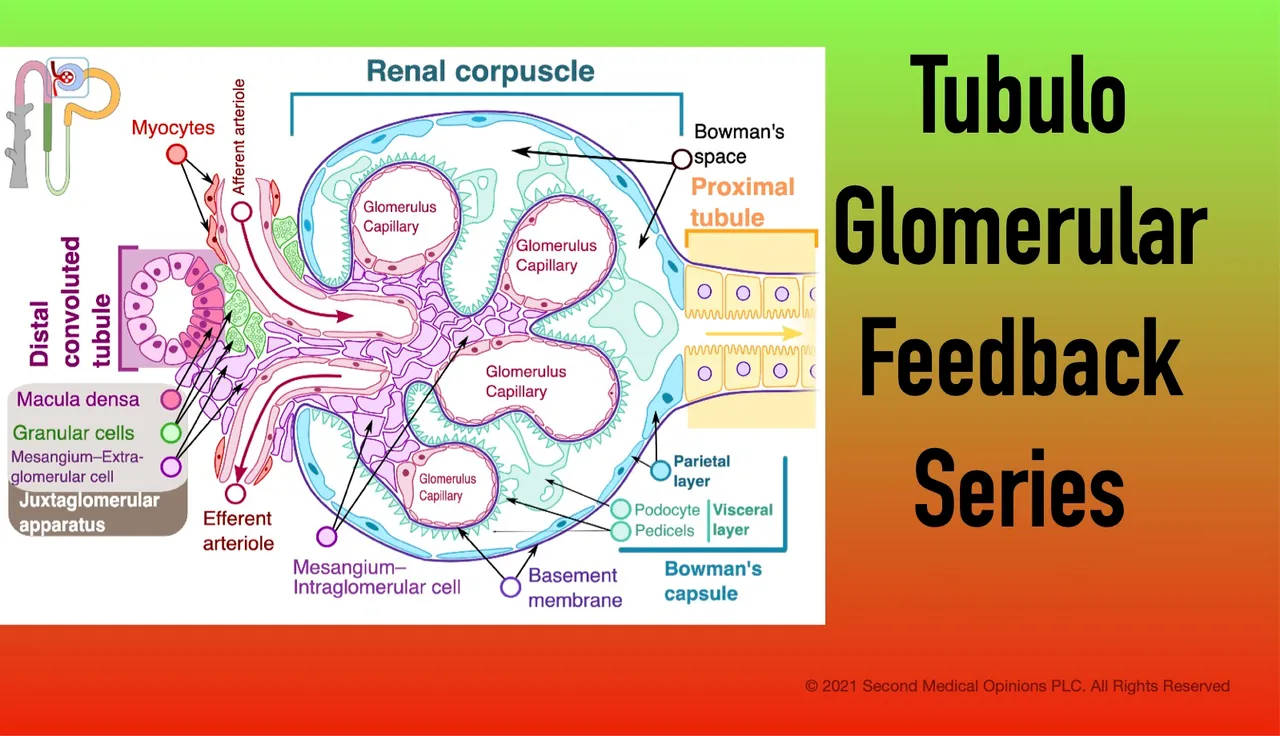
This article states that The juxtraglomerular granular has EP4 (and EP2) prostanoid receptors that respond to PGE2. There receptors are coupled to G proteins which in turn activate the adenylil cyclase which forms cAMP (second messenger). cAMP activates protein kinake A (PKA).
The activation of PKA leads to the fusion and release of renin granules (exocytosis). The mechanism may be through the activation of channels that hyperpolarize the JG cell membrane. IP receptors (PGI2) and EP2 receptors are also involved.
PGE2 also stimulates renin synthesis in JG cells via (EP) receptors through the cAMP/cAMP-responsive element-binding (CREB) pathway as shown in this article.
Credits
Renal Corpuscle Image. 2019. Downloaded under a Creative Commons Attribution-Share Alike 4.0 International License from Wikimedia Commons. Author: Shypoetess. No changes were made.
Posts in this series
The Macula Densa Cells May Sense Tubular Salt Content Using a NHE2 Exchanger
The Macula Densa Cells Also Can Sense Sodium and Chloride Concentrations Using the NKCC2 Transporter
MAP Kinases are Activated by Low Tubular NaCl and Stimulate COX-2 Expression
Inhibition of nNOS in the Macula Densa leads to an Exaggerated TGF Response
The Juxtaglomerular Granular Cells are More Numerous in the Afferent Arteriole
Angiotensin II, Mediated by AT1 Receptors, Stimulates Nitric Oxide Release in Afferent Arterioles
Angiotensin II Effects are Different in the Afferent and Efferent Arterioles
Macula Densa Cell Depolarization Mediates Release of ATP When There is Increase in Sodium Chloride
The Extraglomerular Mesangial Cells Participate in the Signaling of the TGF
ATP is Released Through Large Channels at the Basolateral Membrane of the Macula Densa Cells
A1 Adenosine Receptors are Present in the Smooth Muscle of the Afferent Arteriole
ATP Causes Vasocostriction of the Afferent Arteriole Through P2X and P2Y Receptors
19.Angiotensin II Stimulates the Na/H Exchangers of the Macula Densa Cells